#inca empire
Text
Wherever you go in the world you’re likely to find someone eating potatoes. Loved by all today, this humble vegetable’s roots can be traced back 10,000 years to the Andean highlands.
22 notes
·
View notes
Photo

The Inca Empire in 1527 A.D. at its Territorial Height
432 notes
·
View notes
Text

// hochkultur //
web instagram
by Georg Nickolaus
#machupicchu#peru#photographers on tumblr#landscape#abandoned#ruins#landscape photography#inca#inca empire#andes#travel
57 notes
·
View notes
Photo


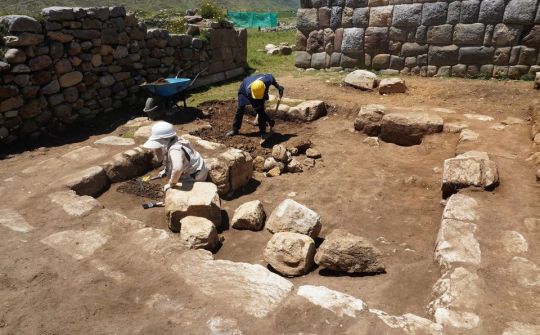

Peruvian Archaeologists Unearth 500-Year-Old Inca Ceremonial Bath
Archaeologists in the Peruvian Andes have discovered an Inca bathing complex built half a millennia ago, which they believe may have served the elite of the sprawling empire than once dominated large swathes of South America.
Found near the "House of the Inca" in the Huanuco Pampa archaeological zone in central Peru, local archaeologists believe that the bath may have served a religious purpose for high-ranking members of the Inca empire, which 500 years ago extended from southern Ecuador to the center of Chile.
Luis Paredes Sanchez, project manager at Huanuco Pampa, said the structure was similar to "more hierarchical, restricted and sacred spaces within the Inca administrative centers, because rather than having a utilitarian or hygienic function, they also served for religious functions and worshiping ancestors."
The "finely carved" bath averages some two-meters in depth, with independent pools and spillways and a central passage taking water into a drainage duct that divides the room into two small platforms, or "benches" for the Inca, Peru's culture ministry said in a statement.
The Huanuco Pampa archaeological site is part of the Qhapaq Nan project, a complex 25,000-kilometer-long road network that linked Ecuador, Colombia, Peru, Bolivia and Argentina. The road system was declared a World Heritage Site in 2014.
Peru is home to hundreds of archaeological sites across the country, including the Machu Picchu citadel in the Inca capital of Cusco, and the Nasca lines, massive designs drawn in Ica's coastal desert region over 1,500 years ago.
#Peruvian Archaeologists Unearth 500-Year-Old Inca Ceremonial Bath#House of the Inca#Huanuco Pampa archaeological zone#inca#Inca empire#ancient artifacts#archeology#archeolgst#history#history news#ancient history#ancient culture#ancient civilizations#Inca history
131 notes
·
View notes
Text
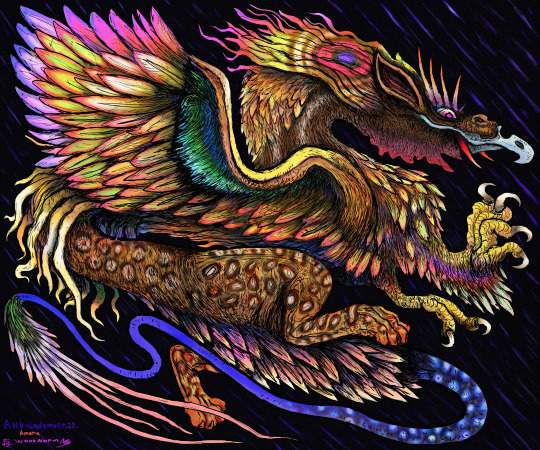
The Amaru or Katari (Aymara) a majestic twin headed serpent like creature depicted across Andean Civilizations, Originally said to have been capable of transcending spiritual and otherworldly boundaries for the world was Separated into the realm of the gods and birds, Hanan Pacha or the world above; the world where mankind resides the Kay Pacha or world of the present; and finally the underground realm of the dead or the Ukhu Pacha, the world below. where its said the Amaru would move the world by its shear size and force of will, creating many of the mountainous outcroppings seen in the region, or creating devastating earthquakes. This would gain the great beasts the ire of the of gods and leading to cataclysmic and deadly conflict's the great serpents deaths would create vast mountain ranges.
The revered creatures lore and depictions would be altered to suit changing society's and foreign colonial influence trying and suppress Indigenous beliefs and values, some Incan rulers even tried to harness this power by adopting name for themselves to try and cement their political gain . Eventually this lead to depictions that suited a more chimeric monstrous for, reflecting its old world counter parts, adopting traits from many other creature, to now be defeated by mere humans.
some cultures preserved and even re incorporated these new aspects with the old, creating hybrid depictions and gaining very broad symbolism such as the economy of water, and tending to the land, and even more cosmological aspects of space or wisdom, or simple fundamentals of the creativity of the peoples, sometimes these new Amaru could be seen clashing with each other. representing the more destructive side of nature, devastating the peoples and the lands, too only be stopped by the storms themselves or through the intervention of their old rivals, now taking a new cast of god's. once again through death creating the Mantaro valley returning to their earthly roots.

#amaru#dragon#serpent#creaturedesign#digital art#monster#inca empire#Andean civilization#mythology#south american#chimera#illustration
40 notes
·
View notes
Text

For the Inca, the guinea pig was like a adorable multi purpose tool for their society!😄
#history#guinea pig#inca#peru#andeas#south american history#shoqma#indigineous people#food#traditional practice#pets#ancient history#inca empire#south america#latina#animals#andeas culture#peruvian history#native american#mummification#latin america#animal history#andeas mountains#domestic animals#nickys facts
40 notes
·
View notes
Photo

America: Being the Latest, and Most Accurate Description of the New World (1671)
#america#north america#south america#central america#west indies#the new world#1492#aztec empire#inca empire#american indians
71 notes
·
View notes
Text
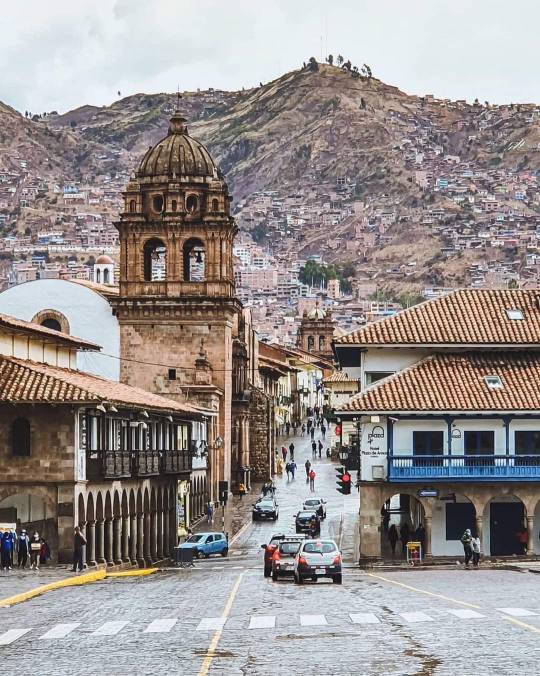
CUSCO - PERU
#cusco#peruvian andes#andes peruanos#inca empire#imperio inca#inca#incas#peru#south america#america del sur#america
73 notes
·
View notes
Text
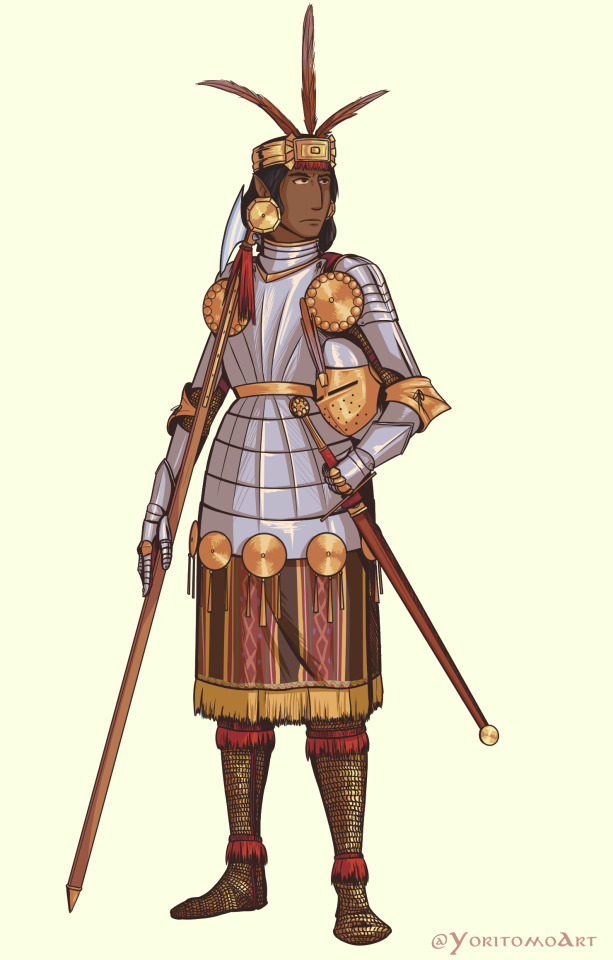
"Don't let their fancy and decorated armor deceive you. The noble elves of the Tiawarin lead their soldiers from where they should. From the front"
Tiawarin noble elf, in full armor.
Also, Draw This in Your Style! :D
#armor#knight#ttrpg#ttrpg art#ttrpg character#ttrpg elf#elves#tiawarin#inca#inca empire#inca fantasy#fantasy#fantasy art#draw this in your style#dtiys#dtiyschallenge
33 notes
·
View notes
Text
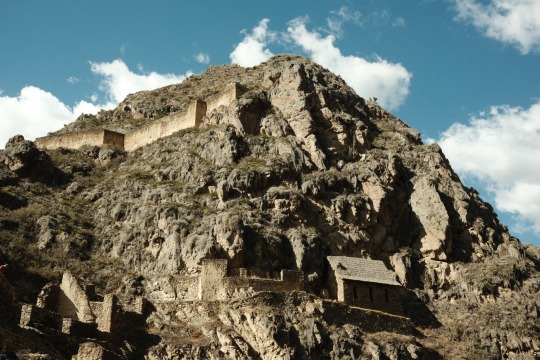
#sacred valley#travel#fuji x100v#fujixseries#fujifilm#photography#fun#peru#travel bucket list#bucket list destinations#bucket list#beautiful destinations#landscape photography#mountains#mountain#inca#quechua#inca empire#ollantaytambo#wanderlust#lost#film simulation#films not dead
8 notes
·
View notes
Text
Both oral traditions and archaeology suggest that warfare was rife in the sierra from Ecuador to Argentina after ad 1200 or a bit later. Many communities settled on the peaks in protected villages well above the best farmlands. Some of the most powerful societies of the time, including the Lupaqa and Qolla, lived around Lake Titicaca. In the early Colonial era, they called their pre-Inca rulers kings, but they do not seem to have attained a state level of organization. Instead, the region’s societies seem to have lived in considerable instability, in which local conflict played a major role in both begetting chiefly alliances and fracturing polities (Arkush 2011). Radiocarbon dates suggest that the settlement pattern shifted radically about ad 1300, which may have been a result of a significant growth in conflict among neighboring communities (Arkush 2011). Groups living in the populous Peruvian sierra, such as the Wankas, lived in towns that contained as many as 4,500 densely packed circular houses and may have housed 10,000 or more people. Significantly, the shift to defensively situated communities occurred about the same time in that region as had occurred in the Titicaca area, suggesting that similar processes were in play in both areas (D’Altroy et al. 2001). In the south Andes, the largest towns contained a few thousand people, but regional polities still held no more than 20,000.
==========
Linguists have recently arrived at the view that the Incas may have adopted Quechua for imperial rule precisely because it was already widespread. Before then, the Incas spoke one or two other languages, most likely Aymara and possibly Puquina.
==========
The language that the Incas used to administer their domain is commonly known today as Southern Peruvian Quechua, but its speakers knew it as runasimi, or human speech.
==========
The term Quechua itself was probably imposed early in the Colonial period by Spaniards who mistook the word qheswa (valley) in the phrase qheswa simi (valley speech) for the name of the language (Mannheim 1991).
==========
Quechua was entrenched by 1532 as the language in which all official business was supposed to be conducted.
==========
the home region of Quechua lay along the central Peruvian coast (figure 2.6a). The language had split into two major branches and was already widely distributed in the highlands at least five centuries before the Inca rise to power. The variant that the Incas adopted appears to have been Chincha Quechua. Its roots lay on the south-central coast, but it was used in parts of the Andes from Ecuador to south Peru (Adelaar and Muysken 2004). The Incas’ major contribution to the geographic spread of this form of Quechua was in the south Andes, and even some of that distribution can be attributed to Spanish Colonial practices (DeMarrais 2012).
==========
Drawing from historical linguistic and toponymic (place-name) evidence, some linguists suggest that the Incas probably spoke Aymara well into the early imperial era, since that was the language of the southern Peruvian highlands in late prehistory and Aymara place-names are even found as far north as the central Peruvian highlands (Adelaar and Muysken 2004; Cerrón-Palomino 2004, 2008; Heggarty and Beresford-Jones 2012; figure 2.6b). Quechua and Aymara speakers apparently interacted a great deal, to the extent that the two languages now overlap about 30 percent (e.g., in lexicons)
==========
The leading Andean linguist today, Rodolfo Cerrón-Palomino (2012), suggests that the shift may have occurred as late as the rule of Wayna Qhapaq, that is, no more than three or four decades before the Spaniards’ arrival, because its widespread use in the lands to the north made it an effective sociopolitical tool. Intriguingly, a few chroniclers (e.g., Garcilaso, Murúa) reported that the Incas maintained a secret language that only they were allowed to learn. Many scholars have dismissed that idea as fancy, but those who accept its existence have settled on Aymara or Puquina as the most likely candidates.
==========
key Inca terms for sacred places (the capital qusqu, lake Titicaca) or beings (e.g., the Sun deity Inti) arguably have Puquina origins or were filtered through mixed Aymara–Puquina structures (Cerrón-Palomino 2004, 2012).
Terence D'Altroy. The Incas. Second edition.
20 notes
·
View notes
Photo

Peak of Power of the Inca Empire, 1520
138 notes
·
View notes
Text
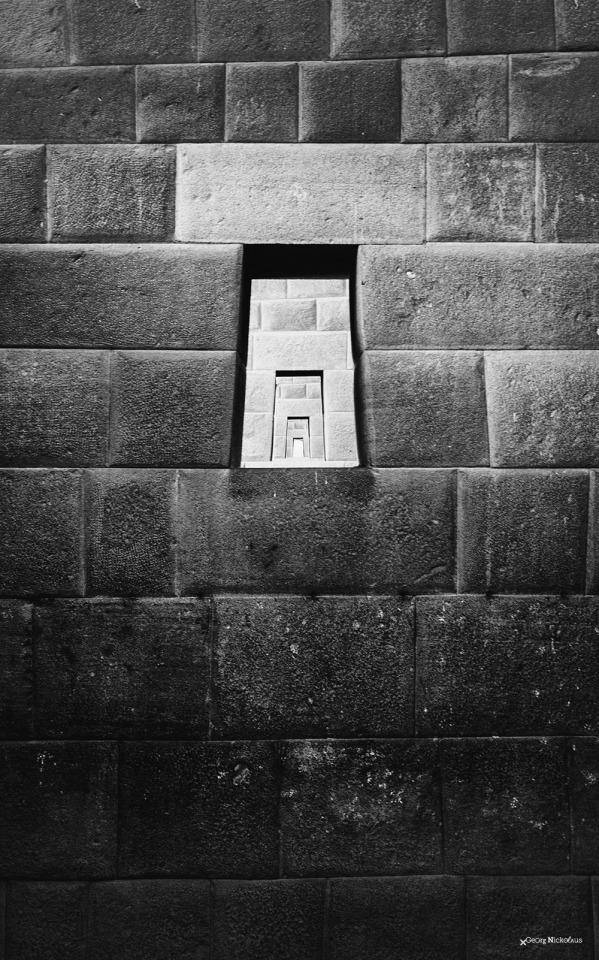
// dimensionstor //
web instagram
by Georg Nickolaus
#windows#black and white#architecture#photographers on tumblr#inca empire#peru#vanishing point#artists on tumblr#design#travel#temple
51 notes
·
View notes
Text

The Emperor's New Groove (2000, Mark Dindal)
17/01/2024
The Emperor's New Groove is a 2000 animated film directed by Mark Dindal.
It is the 40th Disney classic, and began as an epic musical called Kingdom of the Sun with directors Dindal and Roger Allers, but over the course of its six years of production it was transformed by Disney executives into a light buddy comedy about Kuzco, a young and selfish Inca emperor who, mistakenly transformed into a llama by his former advisor Yzma in an attempt to poison him, tries to regain his human form aided by the generous farmer Pacha, who teaches him to be altruistic.
The film, shown for the first time in the United States on December 15, 2000, was not a great financial success but received generally positive reviews, being considered one of the best films of Disney's post-Renaissance era and being nominated for an Academy Award for Best song for My Funny Friend and Me, performed by Sting.
However, the film achieved greater success and notoriety from the public later, thanks to excellent sales on the home-video market, and had a sequel and direct-to-video spin-off entitled Kronk's New Groove (2005) and an animated television series entitled The Emperor's New School (2006-2008).
Kuzco, a spoiled, selfish and arrogant young Inca emperor, intends to build, as a birthday present, a new holiday home with a swimming pool called Kuzcotopia on the top of a hill, at the price of destroying an entire village of farmers. Due to the naivety of Kronk, Yzma's aide, a potion is poured into the glass from which the emperor drinks that transforms him into a llama.
The emperor ventures into the jungle alone, coming across a pack of black jaguars; saved at the last minute by Pacha, Kuzco accepts the latter's conditions to be able to return to the palace.
Meanwhile, Yzma celebrates the emperor's funeral and is proclaimed empress; while she toasts with Kronk to her success, the latter lets slip that the emperor is still alive, so the two leave together to look for him.
Kuzco: protagonist of the story, he is the emperor of the Inca Empire.
The idea for Kingdom of the Sun was conceived by Roger Allers and Matthew Jacobs, and development of the project began in 1994. When pitching the project to Disney's then-CEO and president Michael Eisner, the latter said that "it has all the elements of a classic Disney film", and thanks to his success as director of The Lion King that same year, Eisner gave Allers carte blanche with both casting and plot. In January 1995 Variety reported that Allers was working on "an original Incan-themed story".
In 1996 the production team took a trip to Machu Picchu, Peru, to study Inca artifacts and architecture and the landscape in which this empire was created.
Kingdom of the Sun was supposed to be the story of a greedy, selfish emperor (voiced by David Spade) who finds a farmer who looks just like him (voiced by Owen Wilson); the emperor trades places with the peasant for fun, just as in Mark Twain's archetypal novel The Prince and the Pauper. However, the evil witch Yzma plans to summon the evil god Supay and capture the sun so she can stay young forever (the sun gives her wrinkles, so she speculates that living in a world of darkness would prevent her from aging).
#the emperor's new groove#animation#2000#List of Walt Disney Animation Studios Films#Rogers Allers#Buddy film#Emperor#Inca#llama#united states#Academy Award for Best Original Song#My Funny Friend and Me#sting#direct to video#kronk's new groove#the emperor's new school#jaguar#Funeral#inca empire#Matthew Jacobs#michael eisner#the lion king#variety#machu picchu#peru#owen wilson#Archetype#mark twain#The Prince and the Pauper#Supay
8 notes
·
View notes
Text

Tomb Raider: Anniversary (2007)
#2007#gaming#Tomb Raider#Anniversary#Lara Croft#Peru#Vilcabamba#Inca Empire#Atlantis#Scion#Colt#MK IV#Series 80
6 notes
·
View notes
Text
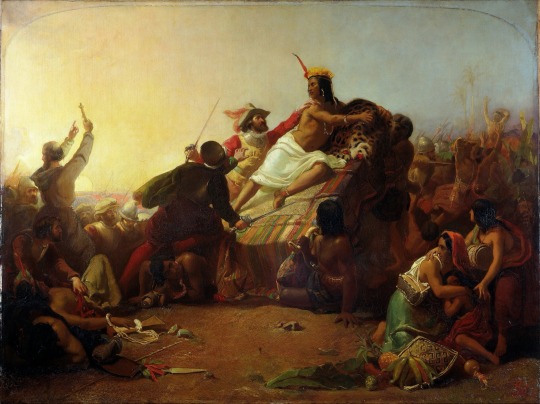
Pizarro Seizing the Inca of Peru by John Everett Millais
Depicting the capture of the Inca emperor Atahualpa by the Spanish conquistador Francisco Pizarro in 1532.
#francisco pizarro#atahualpa#spanish#spain#conquistador#conquistadors#peru#inca empire#inca#inca king#emperor#art#john everett millais#new world#americas#america#south america#history#european#europe#christianity#age of discovery#romanticism
63 notes
·
View notes